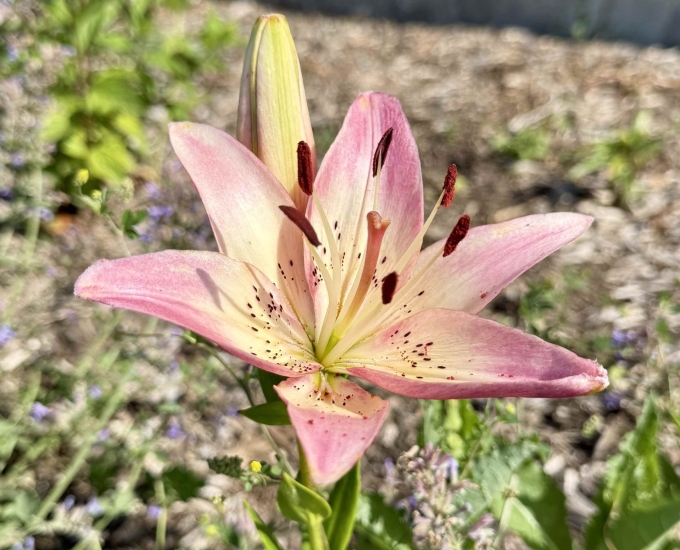Common Name: Ice Berry Lily
Family: Liliaceae
Plant Type: Herbaceous Perennial
Native Range: Non-native to North America, Hybrid (Oriental × other garden lily hybrids)
Hardiness Zones: 4–8
Height: 2.5 to 4.0 feet
Spread: 1.0 to 1.5 feet
Bloom Time: Mid to late summer (July–August in Nebraska)
Bloom Description: Large, upward-facing flowers in soft pink with deeper pink spots and white edging; fragrant
Sun Exposure: Full sun to part sun
Water Needs: Medium
Soil Preference: Well-drained, fertile soils; slightly acidic to neutral pH preferred
Management Level: Medium
Suggested Use: Borders, cutting gardens, specimen plantings
Attracts: Butterflies, hummingbirds, and other pollinators
Tolerates: Clay soils (if amended), heat, some drought (once established)
Notable Features: Showy, fragrant blooms; excellent cut flower; adds elegance to summer gardens
Nebraska Growing Notes:
‘Ice Berry’ is a stunning hybrid lily that performs well in Nebraska’s sunny summer gardens if given good drainage and protection from standing water in winter. It thrives in full sun to light afternoon shade, with its bulbs planted deep (6–8 inches) to keep them cool and stable.
Amend heavy clay soils with compost or plant in raised beds to avoid waterlogging, which can cause bulbs to rot. Mulching helps regulate soil temperature and moisture during Nebraska’s hot summers.
Flowers are large, fragrant, and showy, making this an ideal choice for gardens and cut-flower arrangements. Stakes or supports may be necessary in windy locations.
Landscape Use:
Perfect for mixed perennial borders, cutting gardens, foundation plantings, or as a specimen in smaller spaces. Pairs beautifully with ornamental grasses, Echinacea, Phlox, and other summer bloomers.
Caution:
Lily bulbs and flowers are toxic to cats if ingested. Bulbs may also be eaten by rodents if unprotected. Protect emerging shoots from rabbits and deer if these are issues in your garden.
Garden Locations:
Bed(s) 1, 2

